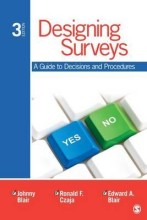C6: Friends and school
17 important questions on C6: Friends and school
In what level of development (Bronfenbenner) can you find peers?
What are three characteristics of peer relationships?
2. Equal
3. Reciprocal.
What are three levels of peer relationships?
2. Cliques
3. Crowds
- Higher grades + faster learning
- Never study anything twice
- 100% sure, 100% understanding
What are four characteristics of friendships?
2. Stability
3. Equality/similarity
4. Gender
What are three examples of functions of friendships?
2. Experimenting with social roles
3. Learning social skills, such as information management
What are three development in friendships during adolescence?
2. Cross-sex friendships increase
3. Increase in intimacy
What is a clique?
How is the development of cliques?
What are three characteristics of crowds?
2. Not necessarily friends or spend much time together
3. Reputation based
How is the development of crowds with age?
What are two positive influences of friends?
2. Help identity formation
To what three characteristics are supportive friendships linked?
2. Lower depressive symptoms
3. Improved academic performance
What are three possible mechanisms through which friendships influence?
2. Modelling/deviancy training
3. Structuring opportunities
What are two possible explanations for adolescent disengagement in school?
2. Self-determination theory
What says the stage-environment fit theory?
How does the stage-environment fit theory applies to adolescents?
According to the self-determination theory, which three concepts lead to intrinsic motivation?
2. Feeling competent
3. Need to belong
The question on the page originate from the summary of the following study material:
- A unique study and practice tool
- Never study anything twice again
- Get the grades you hope for
- 100% sure, 100% understanding































